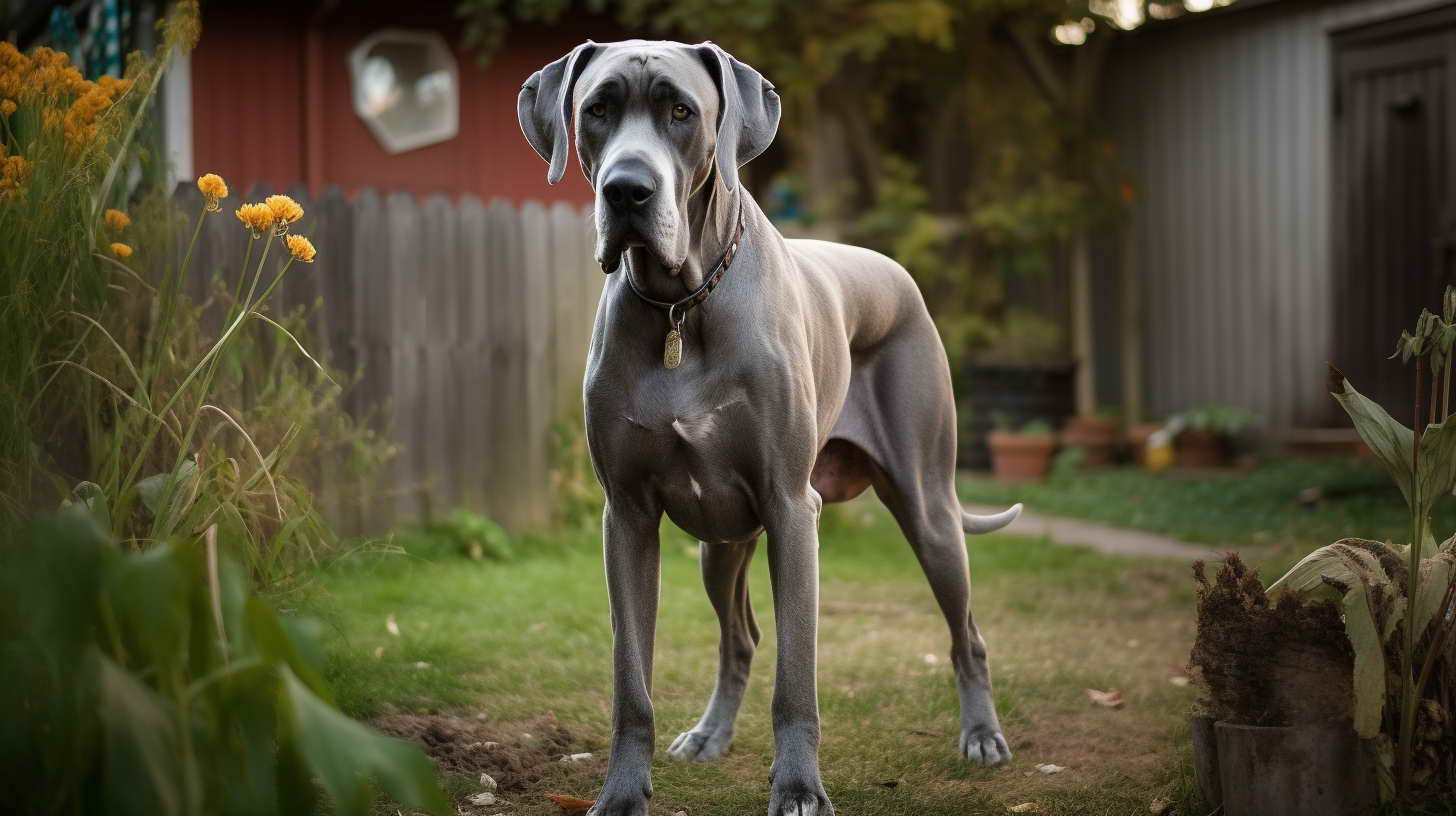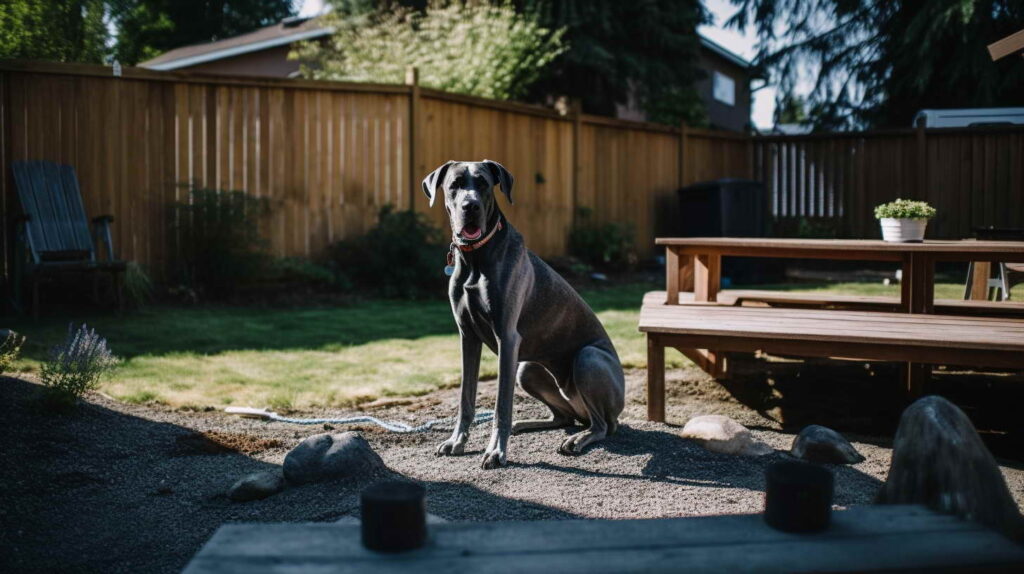
Great Dane Health Issues
PETSIDI – As one of the largest dog breeds in the world, Great Danes are truly gentle giants. However, their size also makes them prone to certain health problems. Being aware of these potential issues can help Great Dane owners provide the best care for their furry friends. This essay explores some of the most common health concerns facing the breed.
Overview of Major Health Issues
Great Danes are predisposed to several conditions that prospective owners should be aware of:
- Hip dysplasia
- Bloat
- Heart disease
- Bone cancer
- Hypothyroidism
Knowing about these diseases ahead of time allows owners to take preventative measures and be alert for early signs. Working closely with a trusted veterinarian is key to managing Great Dane’s health.

Hip Dysplasia
One of the most common issues for large dog breeds like Great Danes is hip dysplasia. This condition occurs when the hip joint does not form properly, leading to arthritis and lameness.
Symptoms include:
- Difficulty standing up
- Decreased activity levels
- Reduced range of motion
- Bunny hopping gait
- Pain or stiffness in hips
Hip dysplasia cannot be cured, but various treatment options exist to minimize pain and improve quality of life. These include:
- Joint supplements
- Weight management
- Exercise modification
- Medication
- Surgery in severe cases
Early detection through veterinary exams and x-rays is important, as is maintaining a healthy weight. Exercise that avoids high-impact activities like jumping can also help reduce strain on joints.
Gastric Dilatation Volvulus (Bloat)
Bloat, also known as gastric dilatation volvulus, is another serious health risk for Great Danes. This life-threatening condition occurs when the stomach twists and fills with gas, preventing the dog from belching or vomiting.
Bloat requires emergency veterinary care and can result in:
- Cardiovascular shock
- Gastric rupture
- Severe dehydration
- Death if untreated
Preventative options include:
- Feeding multiple smaller meals instead of one large daily meal
- Avoiding excessive food and water before and after exercise
- Slowing the pace of eating
- Raising food and water bowls to reduce air swallowed
Early detection of bloat is critical, as treatment success depends on how quickly vets can intervene.
Heart Disease
As with any large breed dog, Great Danes are prone to heart disease and issues with their cardiovascular system. Two conditions especially impact the breed:
Dilated Cardiomyopathy
This heart disease causes the heart to weaken and enlarge. The heart cannot pump blood effectively, leading to congestive heart failure.
Signs include:
- Fatigue
- Weakness
- Fainting
- Labored breathing
- Coughing
Medications can help manage the disease, but prognosis is often poor. Great Dane owners should have annual veterinary exams to check heart health starting from a young age.
Tricuspid Valve Disease
This condition involves leakage in the tricuspid valve of the heart. It is relatively common in large dog breeds.
Symptoms include:
- Exercise intolerance
- Breathing issues
- Abdominal swelling
Depending on severity, treatment may involve medications or surgery. As with other heart diseases, early detection is key.
Bone Cancer
Bone cancer is unfortunately very common in Great Danes. In fact, they have the highest rates of osteosarcoma among all dog breeds.
Signs of bone cancer include:
- Limping
- Swelling
- Bone pain
- Fractures
Depending on factors like metastasis, treatment options range from limb amputation to pain management. Working closely with a veterinary oncologist provides the best results.
Great Dane owners should be vigilant for early signs of bone cancer and seek urgent care if they appear. Annual X-rays after age 3 are recommended to screen for tumors.
Hypothyroidism
Hypothyroidism is a hormonal disorder where the thyroid gland does not produce enough thyroid hormone. It is one of the most common health issues seen in veterinary medicine.
Symptoms can include:
- Weight gain
- Lethargy
- Hair loss
- Skin problems
Treatment typically involves oral thyroid medication given once or twice daily. Most dogs respond well and can live normal lives with proper care.
Annual blood tests help screen for thyroid problems. Owners who notice changes in energy levels or coat health should have their Great Dane tested.

Prevention and Early Detection
The best way to manage Great Dane health issues is through preventative care and early detection. Owners should focus on:
- Annual veterinary exams & bloodwork
- Monitoring for signs of disease
- Maintaining proper nutrition & weight
- Appropriate exercise & activities
- Heart, eye, thyroid, and hip screenings
Working closely with both a general and specialty vet provides the greatest chance of catching conditions early. Pet health insurance can also offset the costs of care.
With diligent prevention and early detection, many Great Danes go on to live happy and healthy lives of 8-10 years or more. Their risk of health problems does not have to limit their ability to be wonderful life companions.
Major Health Issues Summary Table
| Disease | Signs | Treatment | Prevention |
|---|---|---|---|
| Hip Dysplasia | Lameness, stiffness, bunny hop gait | Joint supplements, weight control, medication, surgery | Proper nutrition, exercise, and weight |
| Bloat | Abdominal swelling, unproductive vomiting | Emergency veterinary surgery | Multiple small meals, slow feeding |
| Heart Disease | Fatigue, coughing, fainting | Medications or surgery | Annual veterinary screening |
| Bone Cancer | Limping, fractures, swelling | Limb amputation, pain control | Check x-rays at age 3+ |
| Hypothyroidism | Weight gain, lethargy, hair loss | Thyroid medication | Annual blood screening |
Caring for Your Gentle Giant
Great Danes truly are gentle giants. Their massive size comes with certain health risks, but those don’t have to define the breed. With diligent care and veterinary guidance, these sweet-natured dogs can lead relatively healthy and happy lives.
As a Great Dane owner, use this guide to understand common health issues. Look for early signs and partner with your vet to provide preventative care. Through regular check-ups and prompt treatment when necessary, your furry friend can have many wonderful years as part of your family.
Our dogs rely on us for their well-being. By being informed and proactive, Great Dane owners can ensure their pets enjoy relatively healthy lives for their breed. A focus on prevention, early detection, ** exercise**, nutrition, and weight management goes a long way.
With diligence and love, families and their gentle giants can thrive together. The rewards of sharing life with a Great Dane far outweigh the responsibility of providing attentive health care. Take the time to care for your pet properly, and your loyal companion will bring you joy for years to come.

Leave a Reply